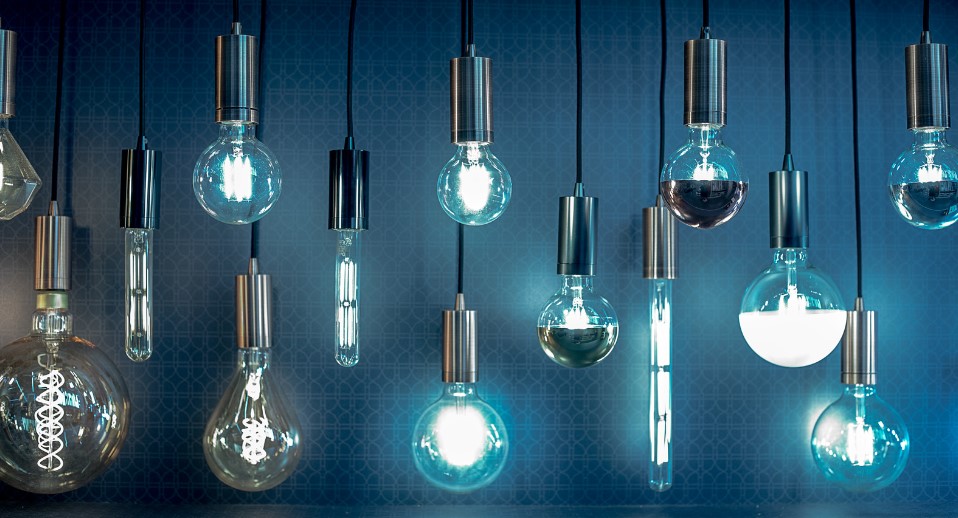Table of Contents
Modular light systems, composed of interchangeable units, offer limitless possibilities for lighting commercial spaces. These modern systems revolutionise traditional lighting by providing unmatched flexibility and creativity. In this article, we explore eight innovative ways to incorporate modular lighting into workplace interiors to transform and enhance professional environments.
Top 8 Creative Uses for Modular Lighting in Interior Design
Modular Lights for Ceilings

In the past, a ceiling light was merely a bulb and a lampshade, or if you were looking for something more dramatic, a chandelier would make a bold statement. Nowadays, installing a modular light system with downlights, spotlights and pendants and can create patterns or clusters of lights exactly where you need them. These combinations will provide functional and useful lighting for everyday work, as well as create a captivating arrangement of lights that will add depth to any space.
Wall of Light
Moving from the ceiling to the walls, modular light systems offer great opportunities for accent lighting. The only choices for wall lights used to be traditional sconces, but now, with modular lights, you can have beams pointed in all different directions, whether it’s a wall of light, a ceiling or a downward wash of light. You can use a combination of different-sized lights to create a composition of light that not only looks striking but also offers effective lighting. A light wall is particularly good in minimalist interior design as it can add interest to blank surfaces.
Office Space Modular Lighting
In professional environments, modular light systems excel in delivering customised task lighting. These systems are perfect for office spaces, where specific lighting needs can vary greatly. Adjustable spotlights and downlights can be configured to balance focused task lighting with softer ambient light, creating optimal conditions for productivity. The reconfiguration of modular systems ensures that as office needs evolve, the lighting can adapt seamlessly.
Cafeteria Modular Light Systems

For areas designed for dining and social interactions, such as cafeterias, modular lights can completely transform the atmosphere. Whether dimming linear systems for a relaxed lunch or enhancing the area with vessel surface downlights for a warm ambience, modular systems offer flexibility to match the dining experience with the desired mood. Features like colour-changing capabilities can even enhance themed events or special occasions.
Meeting Room Modular Lights
Redefine the traditional lighting setups found in meeting rooms with modular systems. Replace standard fixtures with track-mounted, adjustable lights that provide precision lighting for presentations and discussions while also fostering an inviting atmosphere for brainstorming and meetings. This not only maximises the functionality of the space but introduces a modern, sleek look to the meeting environments.
Auditorium Modular Lights
In larger spaces like auditoriums, modular lighting can delineate areas and set the tone without physical barriers. For instance, different lighting modules over seating areas versus the stage can create distinct zones. Using a combination of direct and ambient lighting styles, modular systems can bring a cohesive yet flexible lighting solution that enhances both the functionality and the aesthetics of the space.
Modular Lights for Common Spaces
Modular lights can also be used outdoors as they often come in weather-resistant options. These lights can be used for illuminating patios, gardens or corridors and lighting modules can be strung along walls, dividers or sitting areas to create a magical atmosphere. The joy of this kind of lighting is its flexibility! So, if you fancy a new look, just change your lighting scheme to suit the different seasons or the way you use your common areas.
Uniquely Shaped Offices

Modular lighting proves especially advantageous in offices with unique layouts. Traditional lighting solutions can be restrictive due to their inflexible design, but modular systems adapt effortlessly to any architectural quirks, whether it’s an angular office space, a curved hallway, or irregularly shaped nooks. This adaptability ensures that every corner of these distinctive offices is adequately illuminated, enhancing both functionality and the overall atmosphere.
Conclusion
Modular light systems offer a new level of customisation and creativity that is lacking in traditional light choices. They can create visual lighting displays, solve small space lighting problems and provide focused lights for your workspace. As technology and design advance, we expect to see more exciting modular light options for the dream workspace to create personalised lighting solutions.




